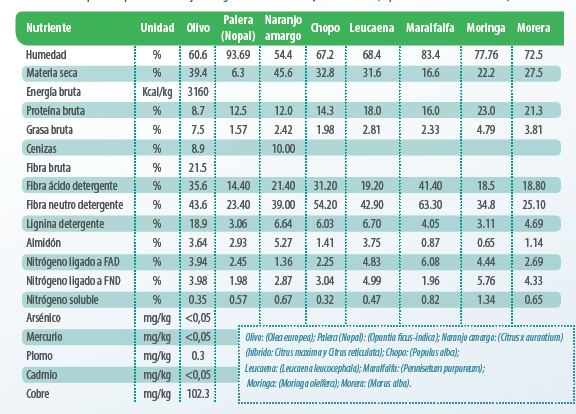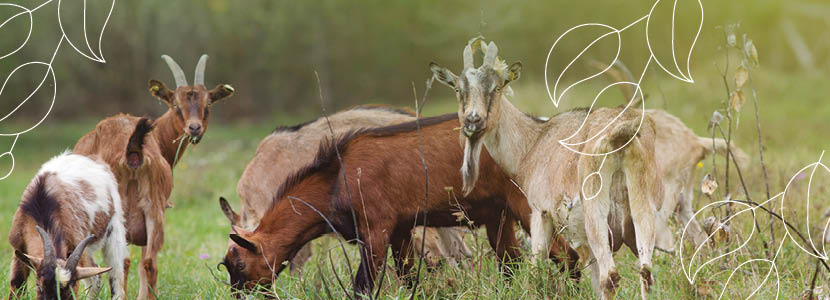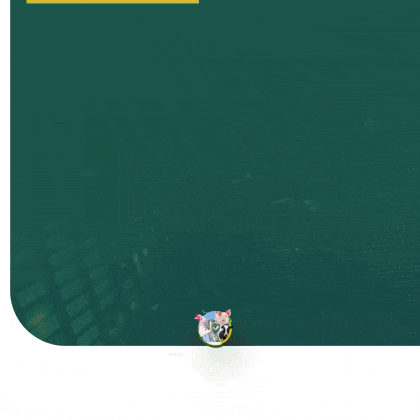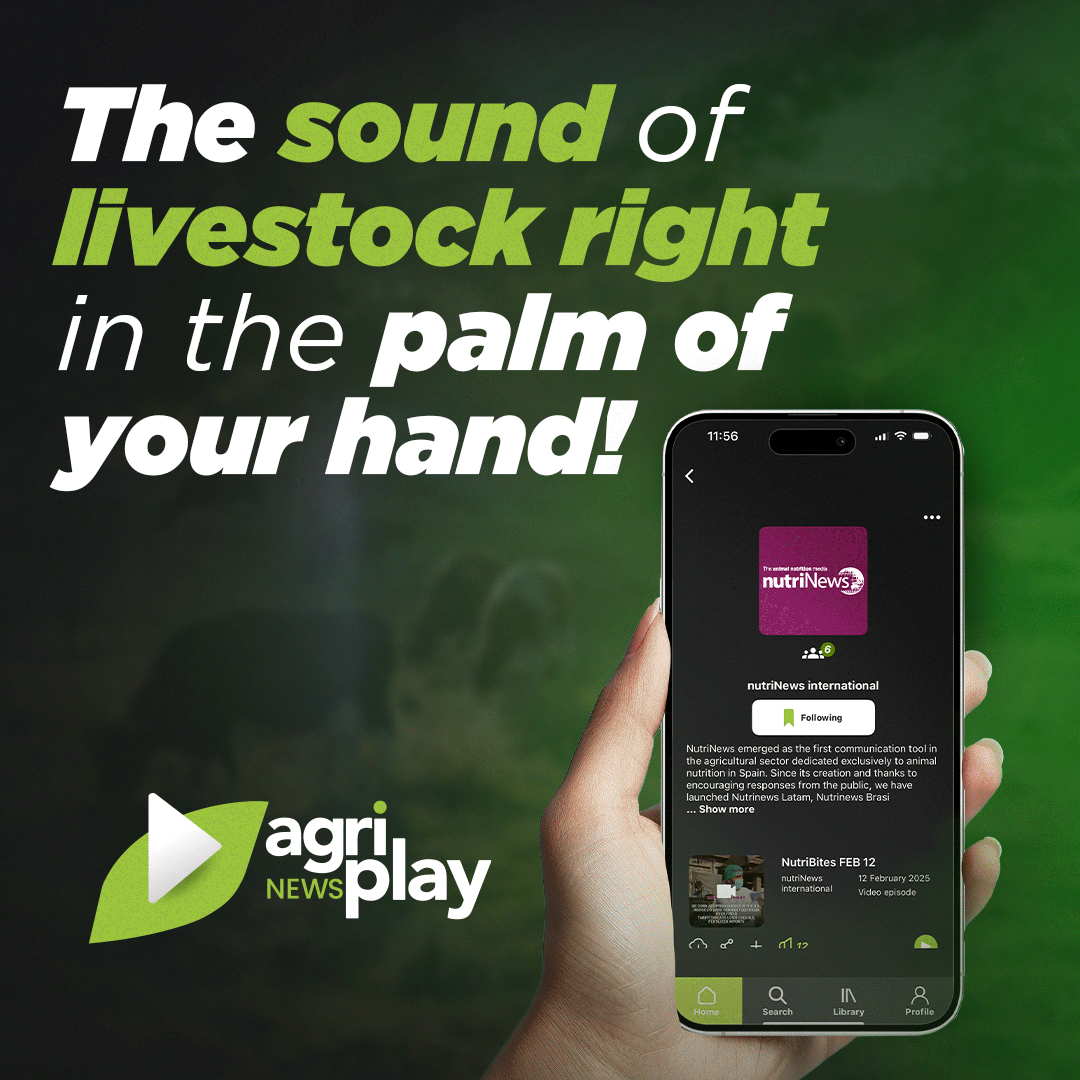Leaves have been traditionally used by farmers as animal feed, but relatively little is known about their potential to replace conventional food sources.
Ethology is based on the analysis of behavior, in terms of the magnitude of responses to the following variables:
- external as is the environment
- internal like hormonal influence of maturity or as neurosensory development.
Ethologists have focused the study of behavior on the mechanisms that control it, its ontogeny or development through the course of life and its phylogenic or evolutionary adaptation.
Feeding behavior of goats can be defined as:
“the relationship between the sensation of satisfaction produced by food ingestion and the sensations caused by each component of the ration within the organism once they’ve been ingested”
Goats are characterized by their great ability to adapt to the environment in the most unfavorable ecosystems. This is mainly due to their low selectivity regarding food taste, although they have special predilection for fodder and wet pastures.
Another adaptive advantage of goats is the ability to browse. Thanks to the capacity of incorporating themselves while supporting all of their weight only on their hind limbs. This allows them to look for shoots in the branches of trees and shrubs at heights of up to 2 meters.
![]() Goats are considered by Hoffmann (1988) as: intermediate consumers within the herbivore classification that he proposes. However, they are capable of adapting to other environments, which allows them to act as: concentrate selectors or low quality fodder consumers.
Goats are considered by Hoffmann (1988) as: intermediate consumers within the herbivore classification that he proposes. However, they are capable of adapting to other environments, which allows them to act as: concentrate selectors or low quality fodder consumers.
According to Morand and Sauvant (1984) they defined goats as adaptive consumers with medium to high selectivity. This being partly related to the anatomical characteristics of their mouth which possess a wide mobility of the lips and a prehensile tongue. Such aspects allow this species to present a high selection capacity.
![]() On the other hand, they don’t seem to manifest rejection towards bitter flavors, common to shrub legumes due to the presence of tannins.
On the other hand, they don’t seem to manifest rejection towards bitter flavors, common to shrub legumes due to the presence of tannins.
»These nutritional characteristics linked to their eating behavior, create certain difficulties when trying to provide diets that contain necessary nutrients and are appetizing at the same time. With the purpose of maintaining good physiological condition and achieving acceptable production levels.
Goats usually choose different types of plants for consumption. This opens up the possibility to introduce plants thare are rich in: alkaloids, terpenes and tannins. Thanks to their continuous food search behaviour during grazing, this allows them to balance their diet and counteract the negative effects of these compounds.
- Goats accept all kinds of food but not always in the same form.
- When fed monotonous diets, consumption decreases and waste increases
In the case of tannins for example, it has been possible to identify adaptations of the rumen microflora through the presence of tannin-tolerant microorganisms. The presence of this type of microflora has to do with goats’ success in hostile environments.
In this sense, goats can use the leaves of trees, since no signs of toxicity were found in goats that consumed 10-23 g/kg of tannin-rich leaves (Phale and Madibela, 2006).
| Chemical composition, in situ degradation and in vitro digestibility can be considered useful indicators for the preliminary assessment of the potential nutritional value of shrubs that have not been previously investigated (Nahand et al., 2011). |
Tree leaves have been traditionally used by farmers as animal feed, but relatively little is known about their potential to replace conventional protein-rich concentrates, such as soybean meal.
Trees planted for animal consumption as a fodder source, also play a valuable environmental role.
Feeding systems using tree leaves
There are two possible approaches to developing feeding systems using tree leaves.
- Introduce trees with known potential as animal feed.
- Use the leaves of trees already established in traditional farming systems.
Several tree species could be effective sources for providing forage nutrition during periods of normality and shortages(Reddy, 2006). Although forages and legume crops have many advantages over tree crops, the leaves of certain trees can be as nutritious as those of forage legumes (Soliva et al., 2005).
The presence of legume forages and tree fodder in pastures has been generally accepted to improve ruminant productivity in both temperate (Ulyatt, 1980) and tropical (Milford, 1967) pastures.
At high altitudes, the foliage of trees can provide more than 50% of the feed available to ruminants in the dry season. Branches are collected and taken to the animals.
Even in regions with heavy rainfall where grass supplies the largest proportion of the dry matter consumed by ruminants, tree leaves and fruits can be an important component of the diet. This is especially true for small ruminants.
The leaves of shrubs and trees become a strategic resource on which the maintenance of animals in critical times of food availability may depend on. In addition to this, the consumption and rumen degradability of fibrous materials depend amongst other factors on their physical-chemical characteristics (Giger-Reverdin, 2000). There is little information regarding their nutritional value, which is essential for the use of leaves as part of the diet of small ruminants (Korbut et al., 2009).
- Research that has been conducted to assess the nutritional value of tree leaves showed that tree leaves have real nutritional value in ruminant diets (Aganga and Tshwenyane, 2003; Kamalak et al., 2004; Azim et al., 2011).
- Chumpawadee and Pimpa (2009) advise that tree leaves should be used as sources of fiber in “Total Mix Rations” (TMR) due to their high protein, mineral and vitamin content and their availability in the dry season.
In addition, toxic substances found in the leaves can be reduced by drying in the sun. These substances can be favorable or unfavorable for intake and digestive parameters.
![]() The associative effects between forages show great variability between studies. This reflects the complexity and multiplicity of nutritional situations that affect rumen intake and function in a given animal (Niderkorn and Baumont, 2009).
The associative effects between forages show great variability between studies. This reflects the complexity and multiplicity of nutritional situations that affect rumen intake and function in a given animal (Niderkorn and Baumont, 2009).
Table 1 shows part of the chemical composition of the leaves of some fruit and ornamental trees. Some of these, like Leucaena are already regularly used in animal nutrition .
Australia is the pioneer in its use in large continuous grazing systems, sowing it in strips mixed with tropical grass.
Something similar happens with Pennisetum purpureum, elephant grass or Maralfalfa which is commonly used in tropical areas of Latin America.
In Spain the olive leaf has been continuously used in small ruminant nutrition. Paying special consideration to copper levels from phytosanitary treatments.
Table 1. Chemical composition of the leaves of certain fruit and ornamental trees (expressed as % dry matter)

In subsequent installments, in our “Raw Material Sheets” section, we will make special emphasis on the chemical composition of these different tree leave sources. With a focus on fat characteristics and on certain minority components of some of them.









